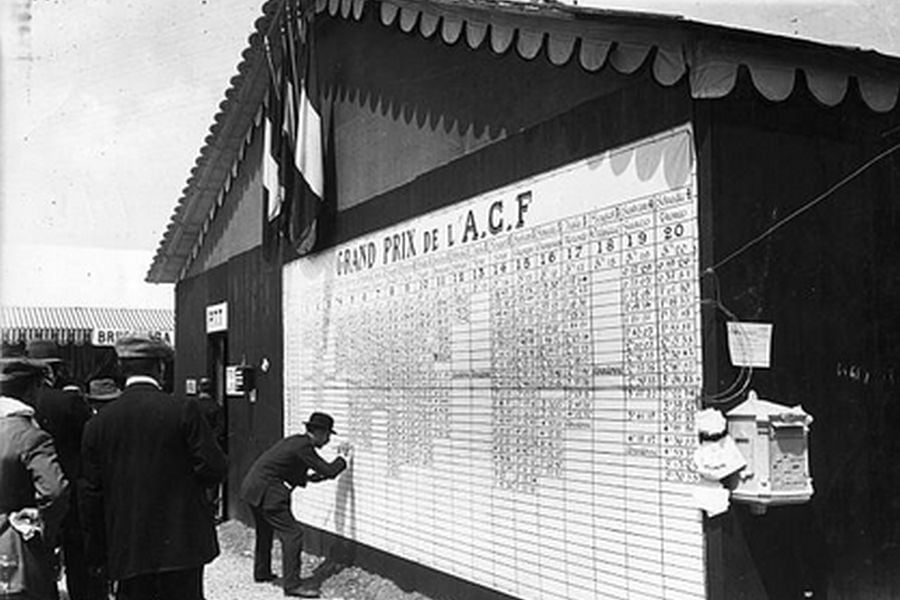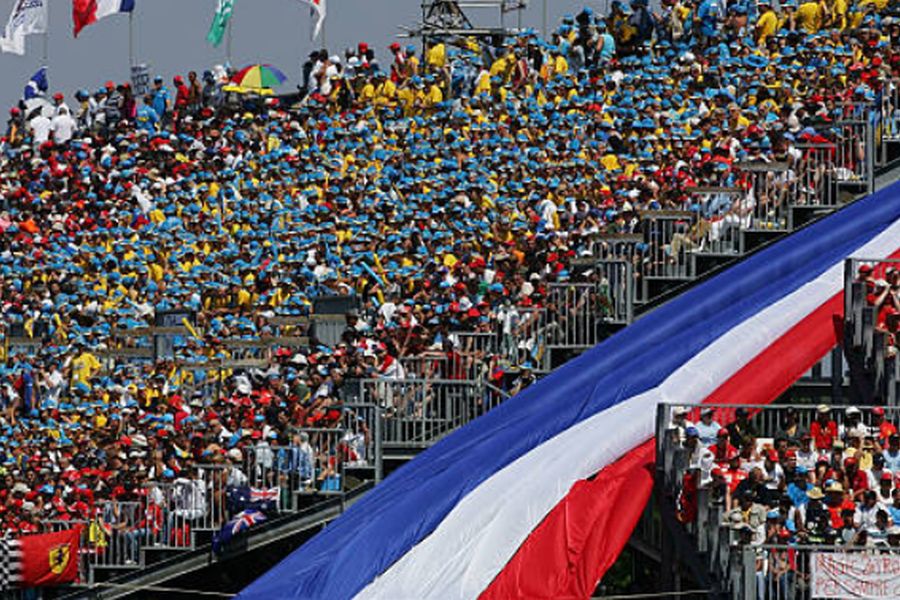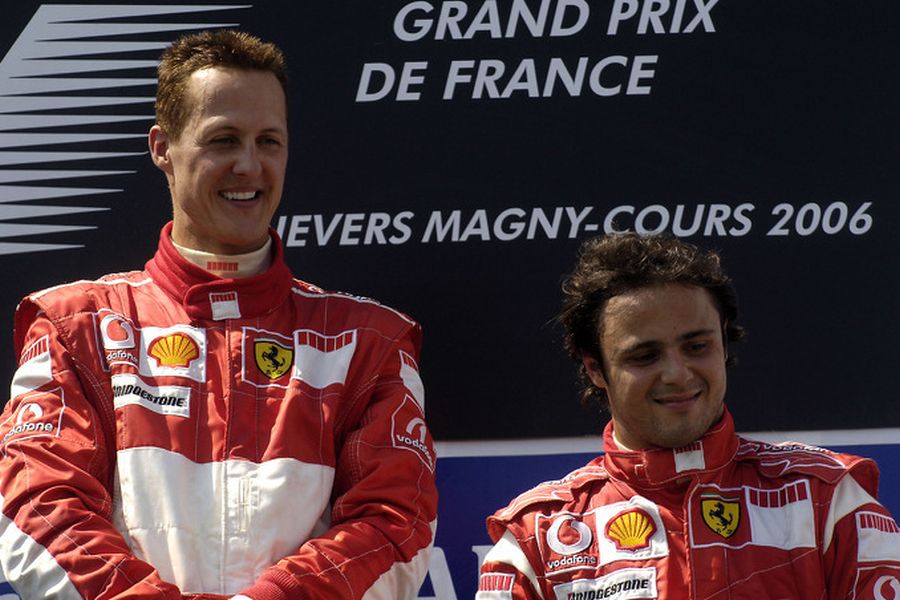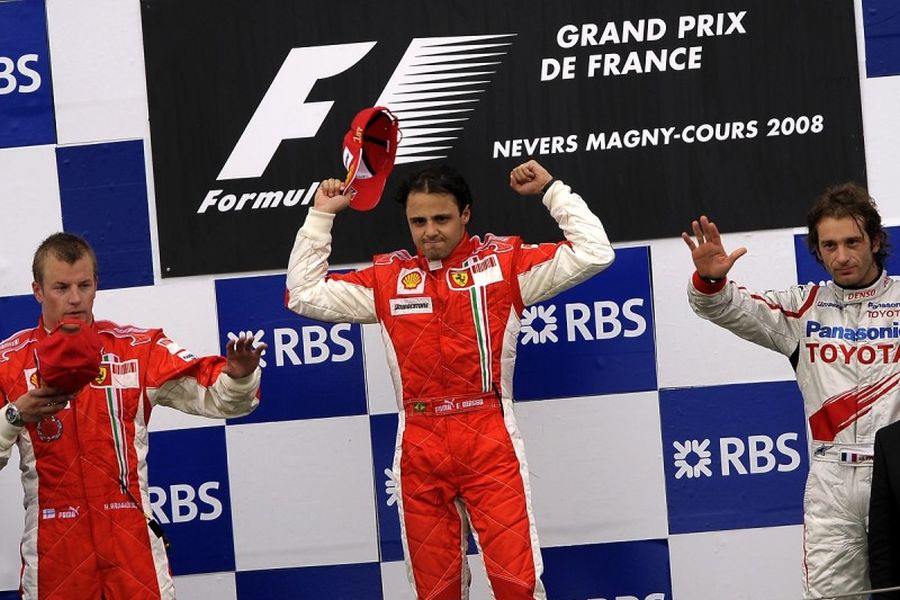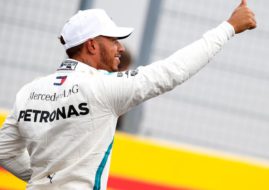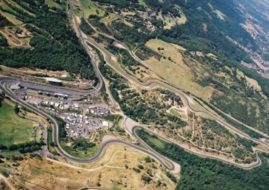How Much do You Know About the History of French Grand Prix?
The French Grand Prix (Grand Prix de France or Grand Prix de l’ACF) is a race that was a part of the Formula One World Championship from 1950 to 2008 and returned to F1 calendar in 2018 at Circuit Paul Ricard. The Grand Prix del’ACF (Automobile Club de France) was held for the first time in 1906 and is considered the world’s oldest Grand Prix race.
Between 1906 and 2008, 86 races have been held at sixteen different locations. The last venue of the French Grand Prix, between 1991 and 2008, was the Circuit de Nevers Magny-Cours. Previously, the race took place at Circuit Paul Ricard (full circuit or short circuit), Circuit Dijon-Prenois, Circuit de Charade, Rouen-Les-Essarts, Bugatti Circuit Le Mans, Reims-Gueux, Lyon or Lyon-Parilly, Monlthery, Pau, Saint-Gaudens, Miramas, Tours, Strasbourg, Amiens, Dieppe and Le Mans.
Gordon Bennett Cup was held before the French Grand Prix
The first French Grand Prix originated from the Gordon Bennett Cup races, established by James Gordon Bennett Jr., an American millionaire and owner of New York Herald. From 1900 to 1905, six races were held in France, Ireland and Germany.
The entries for the Gordon Bennett Cup race were limited to three per country. France had the most developed motoring industry in that time and Automobile Club de France (ACF) was forced to hold trials between its manufacturers to find three best representatives.
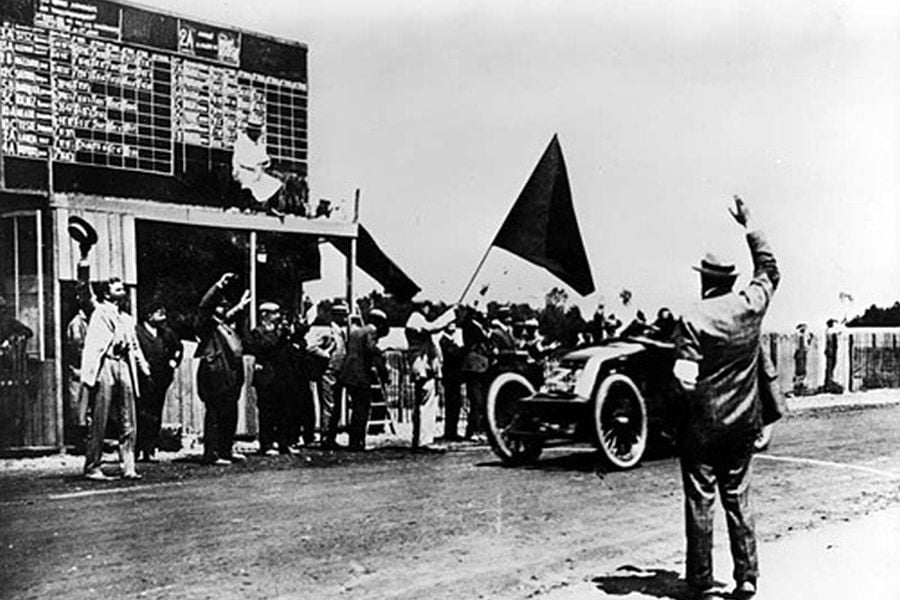
A picture from the 1906 French Grand Prix
32 cars at the start of the first ever French Grand Prix
In 1905, the French automobile industry proposed a new system with more entrants from France but the proposition was rejected. In 1906, when the ACF was responsible to organize the Gordon Bennett Cup, they organized their own event instead, using a name the Grand Prix de l’ACF, referring to the prize of 45,000 French francs, the same value as 13 kilos of gold.
At the inaugural French Grand Prix, the number of entries was not limited and 34 cars appeared on the event, with 32 cars starting the race. Ten French manufacturers were represented by 23 cars, the others came from Italy (Fiat and Itala) and Germany (Mercedes). No British or American manufacturers entered the race.
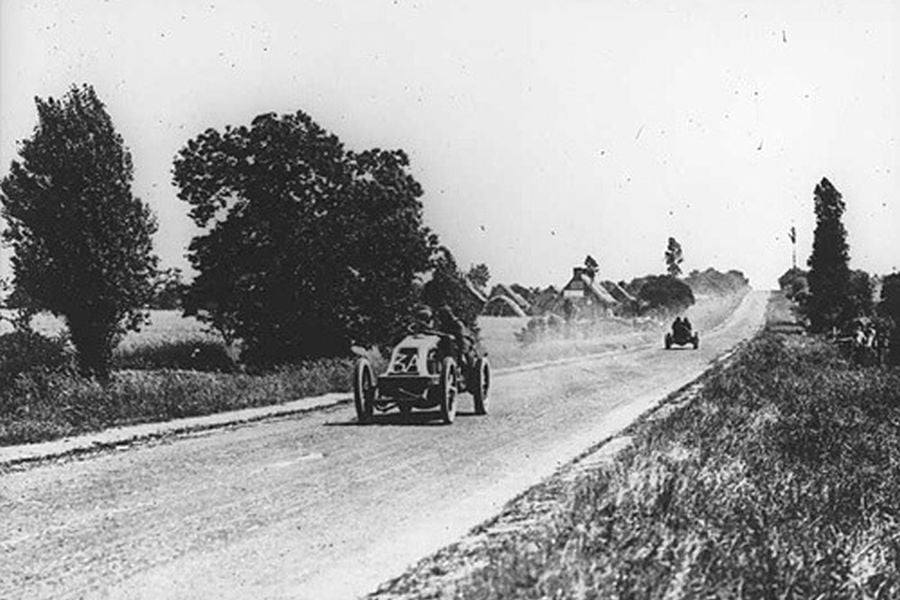
Ferenc Szisz won the 1906 Grand Prix de l’ACF
Hungarian Ferenc Szisz took the Great Prize in 1906
The first ever French Grand Prix was held over two days, on June 26 and 27, on the 103.18-kilometre ‘triangle’ circuit at public roads between Le Mans, Saint-Calais and La Ferte-Bernard, with six laps running on each day. Before the race, a draw took place among the thirteen teams to determine the starting order.
Cars started with a 90-second interval. After two days of racing and total of 1.238 kilometers, the Hungarian Ferencz Szisz won a race in a Renault, taking 12 hours and fourteen minutes for the full course. He was 32 minutes faster than Italian Felice Nazzaro in a Fiat, who took an advantage of new innovative Michelin detachable rims with tyre already affixed to beat Albert Clement in a fight for the second place.
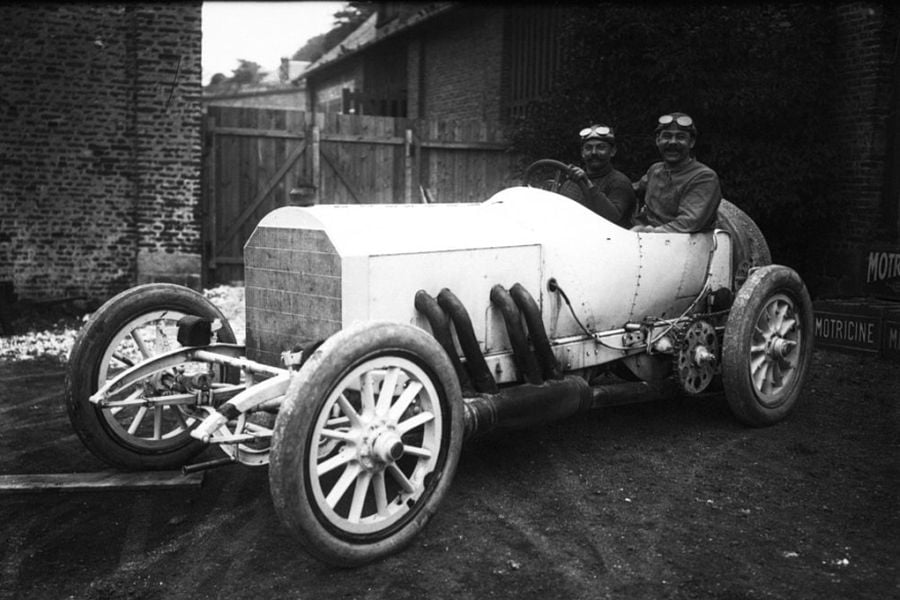
Christian Lautenschlager was the winner of the French Grand Prix in 1908 and 1914
Italian victory in the second Grand Prix at Dieppe
Although media and public generally concluded that the Grand Prix had been a poor replacement for Gordon Bennett Cup, ACF decided to run the Grand Prix in 1907 again. In the same year, the Kaiserpreis was organized in Germany, the race which later became the German Grand Prix.
The second French Grand Prix took place at the 76.9-km long circuit on the public roads around Dieppe in northern France. Thirty-eight cars participated in the race. Albert Clement, the podium scorer from the first race, lost a life in a crash during practice, becoming the first fatal victim of the French Grand Prix. Ferenc Szisz (Renault) and Felice Nazzaro (Fiat), two best-placed drivers from the inaugural race, switched places in 1907, with Nazarro beating Szisz by six and a half minutes.

French Grand Prix at Dieppe circuit
Eight fatal victims of Dieppe circuit
In the following years, Dieppe proved to be an extremely dangerous circuit, taking in total eight lives (four drivers, two riding mechanics, and two spectators) in three events in 1907, 1908 and 1912.
In 1908, Christian Lautenschlager won the race in a Mercedes, ahead of Victor Hemery and Rene Hanriot in Benz cars. In 1912, Georges Boillot gave the victory to Peugeot in the 20-lap race on the 76.9 km long circuit, beating Louis Wagner in a Fiat by thirteen minutes.
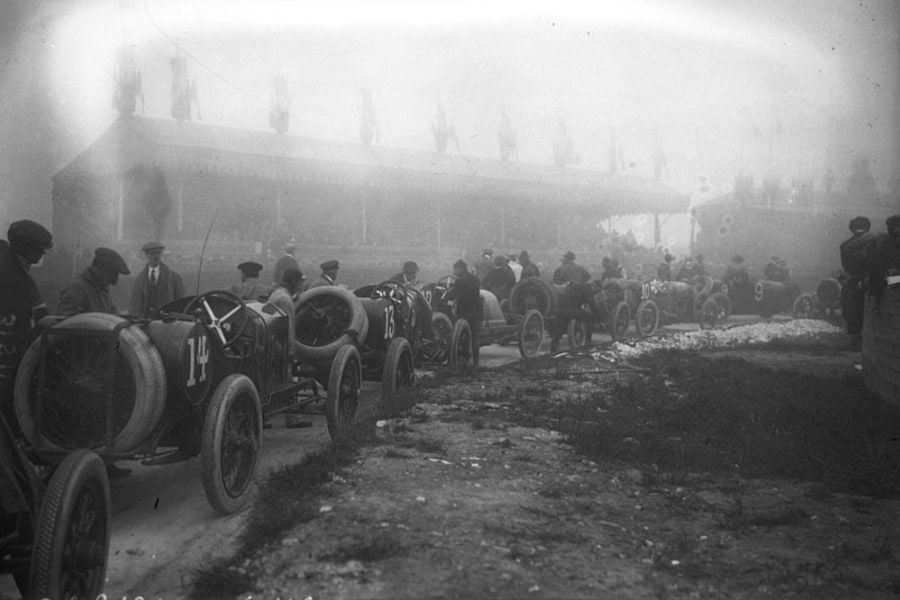
Cars at 1913 French Grand Prix
Second win for Boillot at extremely dangerous Amiens circuit
Georges Boillot became the first two-time winner of the French Grand Prix by winning the race in 1913 which took place at the 31-km circuit near Amiens in northern France. Twenty drivers participated in the race.
The Amiens circuit with its 7.1-mile straight was another extremely deadly race track, taking five lives in separate incidents during tests prior to the race. During the 29-lap race, one spectator has been killed when Kenelm Lee Guinness crashed out in a Sunbeam.
1-2-3 victory for Mercedes in 1914
In 1914, the race took place at the 37.6-km long circuit near Lyon. After twenty laps, Mercedes celebrated 1-2-3 victory with Christian Lautenschlager taking his second trophy. He took an advantage of Continental tyres against Peugeot drivers who were using Dunlops. Louis Wagner and Otto Salzer completed a podium.
Thirty-seven drivers participated in the race. One of them was Ferenc Szisz, the winner of the first French Grand Prix in 1906. He had to retire due to an injury in an accident in which another car hit him while he was changing a wheel.
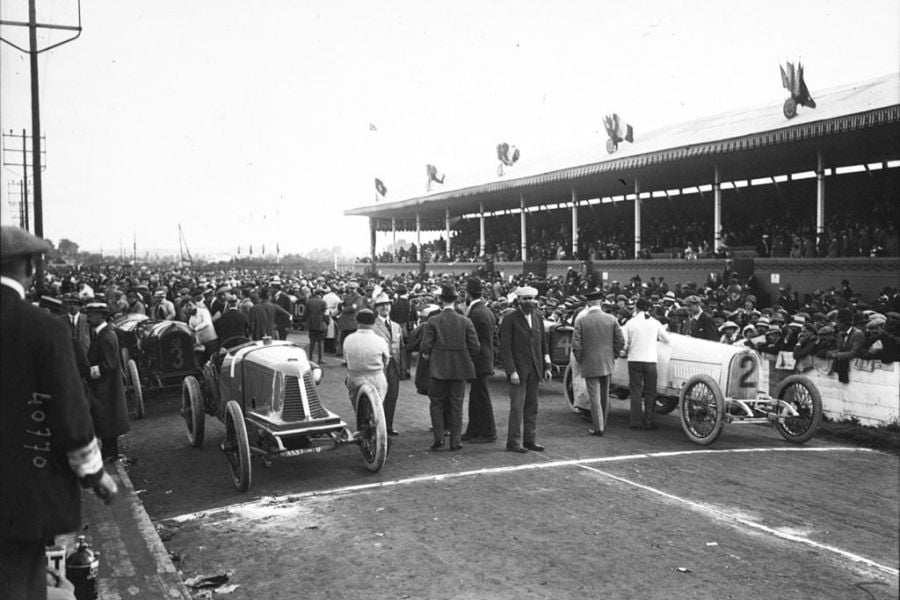
Cars at 1914 French Grand Prix
American victory in the first post-war race
The World War I stopped all racing activities between 1914 and 1919. The French Grand Prix resumed in 1921, returning to the original place at Le Mans but using the 17.26-km Circuit de la Sarthe in its first year.
Just 13 car started the race. After 30 laps, American Jimmy Murphy took the first post-war victory in a Duesenberg, beating American-Italian racer Ralph DePalma in a Ballot 3L by fifteen minutes.
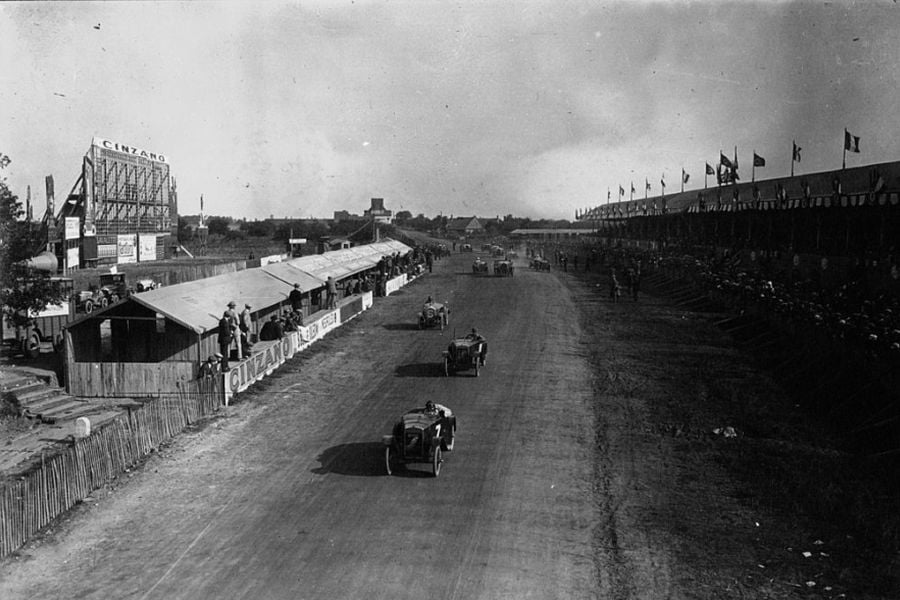
The 1923 French Grand Prix at Tours
Three circuits for three races between 1922 and 1924
In the following three years, the French Grand Prix took place at three different public road circuits. In 1922, eighteen cars raced at 13-km long circuit near Strasbourg. The circuit was close to Bugatti’s headquarters in Molsheim and four Bugatti 30s made a debut in the race. Two Bugatti drivers were on a podium but the victory went to Felice Nazzaro in a Fiat 804.
In 1923, seventeen cars raced at the 22.8-km circuit near Tours in central France. Henry Seagrave took the victory in a Sunbeam. In 1924, the race returned to Lyon but on the shortened 23-km version of the previous circuit. Giuseppe Campari won the race in an Alfa Romeo P2 8C/2000.

Antonio Ascari’s wrecked car at 1925 French Grand Prix
1925 – first race at Autodrome de Linas-Montlhery
1925 was one of milestones years for the French Grand Prix because it took place on the first permanent race track in France, the Autodrome de Linas-Montlhery, located about 30 kilometers south of Paris. The race was a part of the four-event AIACR World Manufacturers’ Championship.
The winners of the 1000-km race (80 laps on the 12.5-km circuit) were Robert Benoist and Albert Divo, who were sharing the #10 Delage 2LCV. The race was marred by a fatal crash of Alfa Romeo driver Antonio Ascari, a father of future F1 star Alberto Ascari.
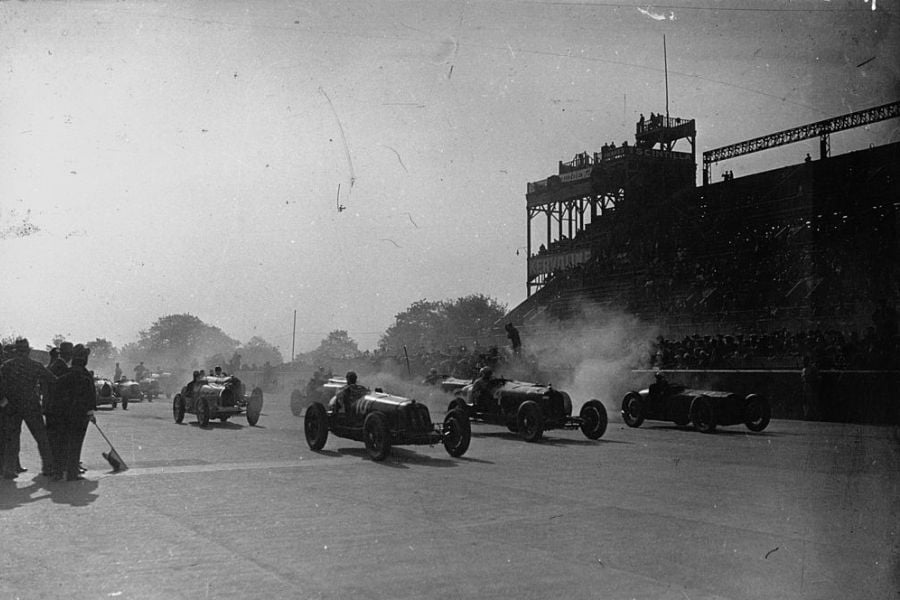
1931 French Grand Prix at Autodrome de Linas-Montlhery
Eight races in the Parisian suburb
In the following years until the World War II, the French Grand Prix visited six different locations. After an opening event in 1925, the Autodrome Montlhery hosted the race seven more times, in 1927, 1931 and five times between 1933 and 1937.
In 1927, Robert Benoist repeated a victory in a Delage. In 1931, the French Grand Prix at Montlhery was a part of the inaugural AIACR European Championship season. The winners were Louis Chiron and Achille Varzi in the #32 Bugatti T51.
From 1933 to 1937, Montlhery would become the sole host of the event. Louis Chiron has won two times in that period, driving an Alfa Romeo P3 in 1934 and Talbot in 1937. The other winners were Giuseppe Campari (1933. Maserati), Rudolf Caracciola (1935, Mercedes), Raymond Sommer/Jean-Pierre Wimille (1936, Bugatti).
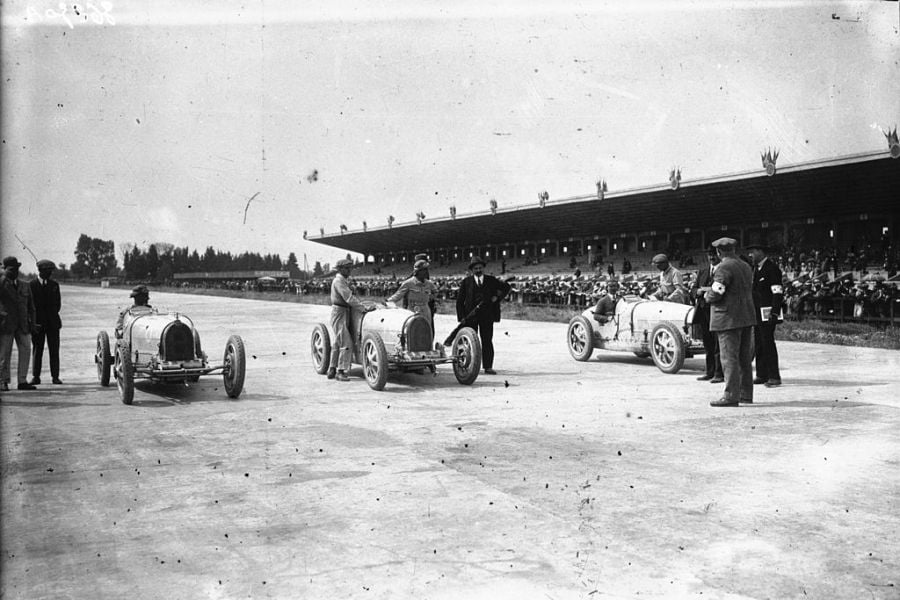
Poor starting grid at the 1926 French Grand Prix
Only three cars started at Miramas in 1926
The Circuit of Miramas was the second permanent race track in France and it hosted the French Grand Prix in June 1926. It was the most shameful edition of the French Grand Prix in the history because of twelve cars only three Bugattis started the race, the other cars weren’t ready.
In the end, only Jules Goux in the #24 Bugatti 39A completed the full distance of 100 laps at the 5-kilometer circuit. The French Grand Prix never returned to Miramas.
The famous French Grand Prix at Pau in 1930
After three races at permanent tracks between 1925 and 1927, the French Grand Prix visited Saint-Gaudens in 1928 and then Le Mans in 1929. The Briton William Grover-Williams won both races in a Bugatti. The same driver won the first ever Monaco Grand Prix earlier in May 1929.
In 1930, the French Grand Prix came to Pau, taking place at 15.8 km public road circuit. The race was marked by a unique appearance of ‘Blower Bentley’, the model which dominated at Le Mans 24 Hours in those years, and the second place for Bentley driver Sir Henry Birkin. The winner was Philippe Etancelin in a Bugatti T25C.
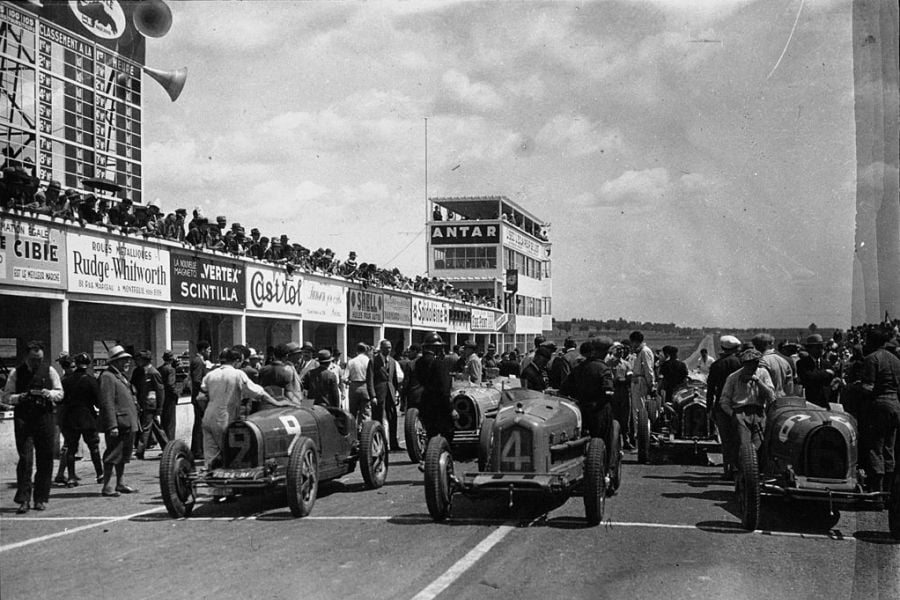
The French Grand Prix came to Reims for the first time in 1932
Reims hosted the French Grand Prix for the first time in 1932
The 7.8-km long Reims-Gueux circuit, famous by its two long straights and big average speeds, hosted the French Grand Prix for the first time in 1932. The race was a part of the European Championship and Tazio Nuvolari won the race in an Alfa Romeo, ahead of two other Alfa drivers Baconin Borzacchini and Rudolf Caracciola.
After five visits to Montlhery between 1933 and 1937, the French Grand Prix returned to Reims-Gueux in 1938. Manfred von Brauchitsch took the win in a Mercedes-Benz W154, beating teammates Rudolf Caracciola and Hermann Lang. Hermann Paul Müller won the 1939 French Grand Prix in an Auto Union D, what was the last race before the World War II stopped racing.
One-off return to Lyon in the first post-war race
After the World War II, the racing resumed in 1947 with the French Grand Prix at Lyon-Parilly circuit. Sixteen drivers participated in the race which was held in September.
Louis Chiron won the 70-lap race at the 7.2-km long circuit in the #6 Talbot-Lago T26. Henri Louveau finished second in a Maserati 4CL. Eugene Chaboud took the last podium spot.
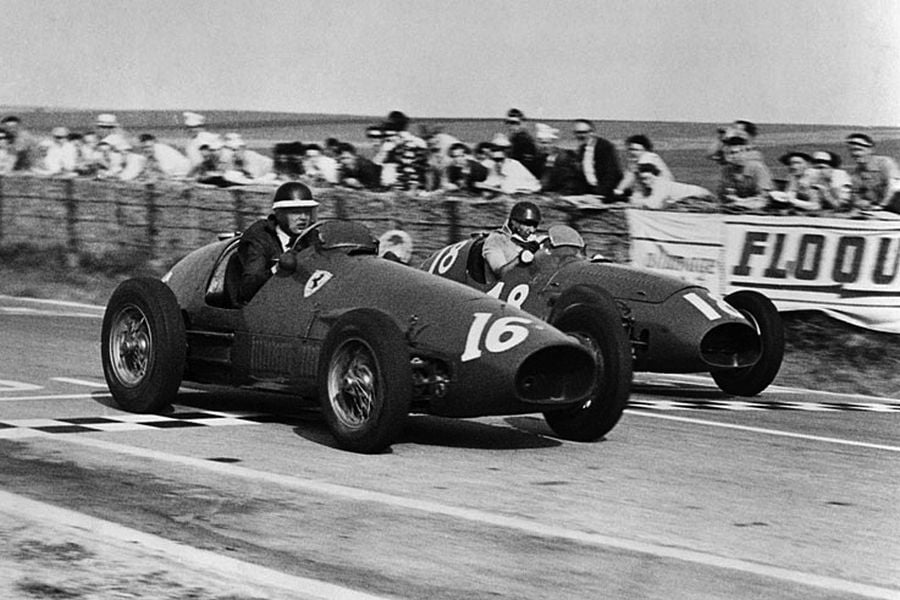
The famous finish of the 1953 French Grand PrixHawthorn beat Fangio by a second
Reims was hosting the French Grand Prix until 1966
In 1948, the French Grand Prix returned to Reims-Gueux circuit which stayed the main venue until 1966, with exception of five events on other circuits and cancelled race in 1955 after Le Mans tragedy. Jean-Pierre Wimille (1948, Alfa Romeo) and Louis Chiron (1949, Talbot-Lago) were the last two winners in the era before the Formula 1 World Championship has been established in 1950.
Juan Manuel Fangio won the first F1 Championship French Grand Prix in 1950, driving an Alfa Romeo 158. He repeated a victory in 1951, sharing a car with Luigi Fagioli. Fangio clinched one more win at Reims, at the wheel of a Mercedes in 1954.
The other winners at Reims were Ferrari drivers Mike Hawthorn (1953, 1958), Peter Collins (1956), and Tony Brooks (1959) and Giancarlo Baghetti (1961), Jim Clark in a Lotus (1963) and Jack Brabham two times, in 1960 with Cooper T53 and then in 1966 with Brabham BT19.

French Grand Prix at Reims
Five races at Rouen, Jo Schlesser’s death in 1968
While Reims was the main venue of the French Grand Prix for almost two decades, the race visited Rouen-Les-Essarts five times between 1952 and 1968. The first French Grand Prix at 5.1-km long circuit took place in 1952, with Alberto Ascari, Nino Farina and Piero Taruffi scoring 1-2-3 win for Ferrari.
Five years later, Juan Manuel Fangio triumphed at Rouen-Les-Essarts’ 6.5-km long circuit in a Maserati 250F. It took another five years for the return of the French Grand Prix to Rouen. In July 1962, Dan Gurney triumphed in a Porsche 804. Two years later, in June 1964, Dan Gurney won again at Rouen. This time, he was driving a Brabham BT7.
The last French Grand Prix which took place at Rouen-Les-Essarts was held in 1968. Jacky Ickx won the race in the #26 Ferrari 312. The race was marred by fatal accident of Jo Schlesser on the second lap of the race.
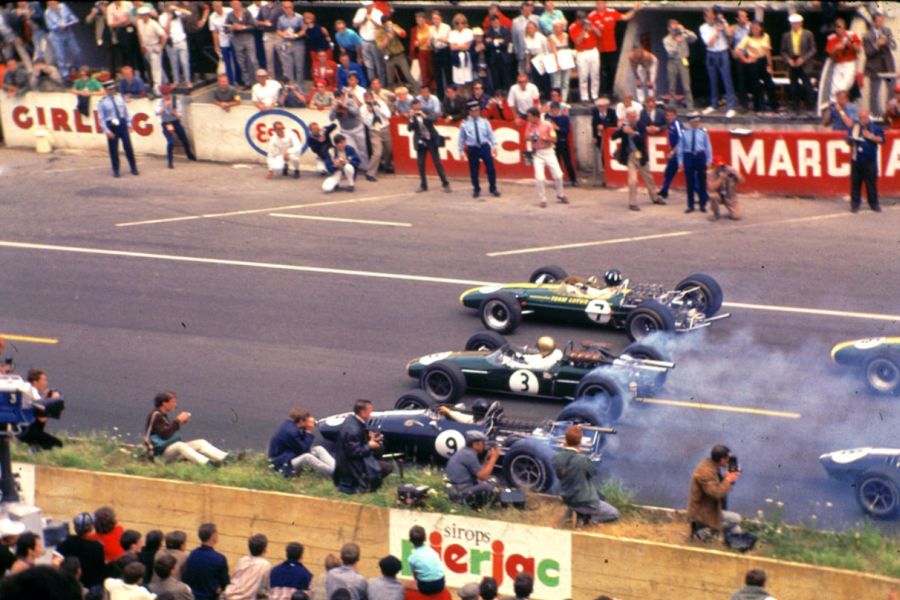
Start of the 1967 French Grand Prix at Bugatti Circuit
One-off return to Le Mans in 1967
In July 1967, the French Grand Prix returned to Le Mans, taking place for the first and only time at the 4.43-km long Bugatti Circuit. The circuit was considered boring and not popular, in comparison with full-length Le Mans circuit.
Graham Hill was the fastest qualifier and the fastest in the race in a Lotus but retired after thirteen laps. Jack Brabham won the race in a Brabham BT24-Repco, in front of his teammate Denny Hulme. BRM’s Jackie Stewart was third.
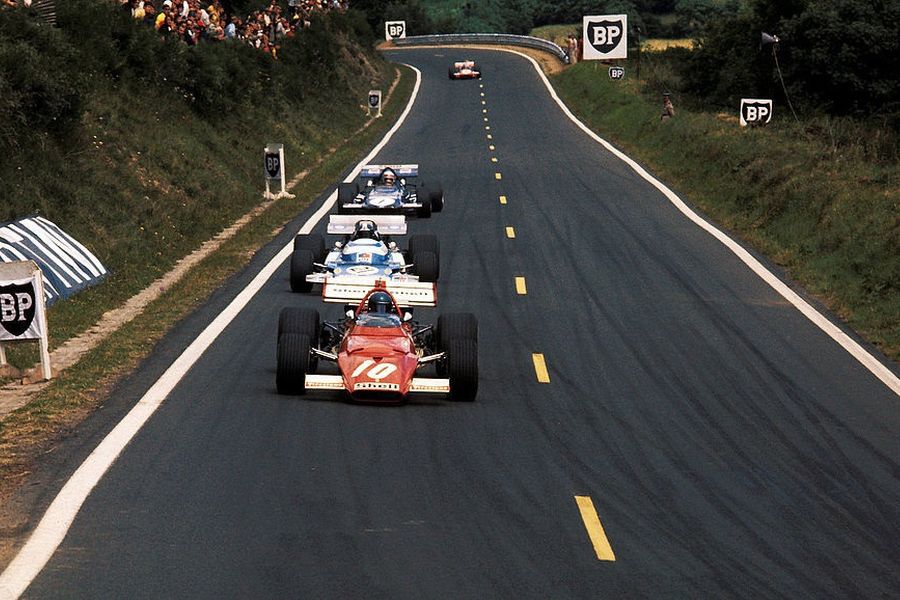
French Grand Prix at Charade
Four races at Charade Circuit
One more circuit which hosted French Grand Prix during the 1960s was the Charade Circuit. The 8-kilometer long circuit hosted the race for the first time in 1965. Jim Clark won the race in a Lotus 25-Climax.
The French Grand Prix returned to Charade in 1969 and then in 1970. Jackie Stewart was the winner in 1969 in a Matra MS80-Cosworth. A year later, Jochen Rindt triumphed in a Lotus 72-Cosworth. In 1972, Jackie Stewart won the French Grand Prix at Charade in a Tyrrell-Cosworth.
Five races at Dijon-Prenois
During the 1970s, two race track came to the list of French Grand Prix venues – Circuit Paul Ricard and Dijon-Prenois. The French Grand Prix visited Dijon-Prenois for the first time in 1974, taking place at the 3.2.km long circuit. The winner was Ronnie Peterson in a Lotus 72-Cosworth. Three years later, Mario Andretti triumphed at 3.8-km long circuit in a Lotus 78-Cosworth.
After two wins of Lotus at Dijon-Prenois, Renault triumphed two times in 1979 and 1981. Jean-Pierre Jabouille triumphed in 1979 and then Alain Prost in 1981. The last French Grand Prix at Dijon-Prenois was held in 1984 when Niki Lauda took the victory for McLaren.
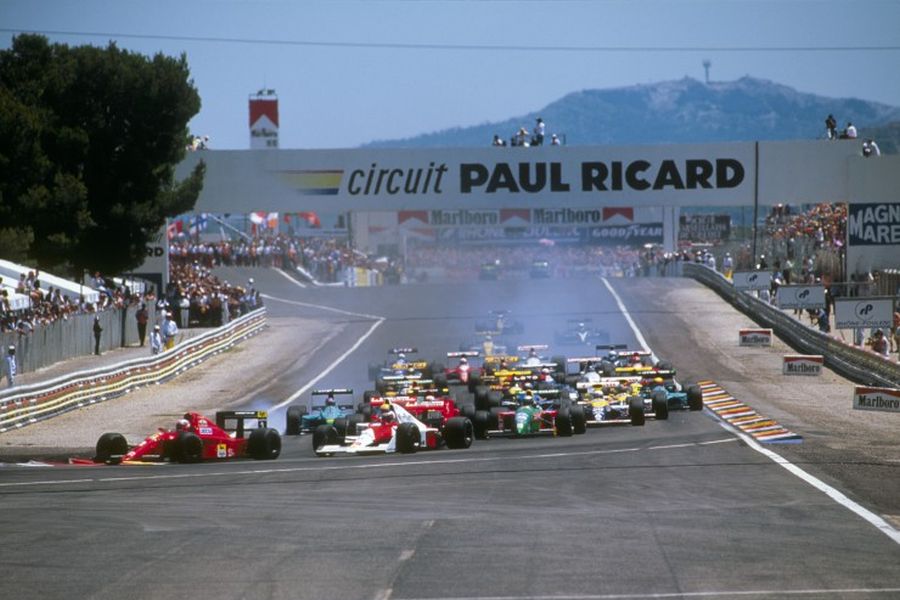
The 1990 French Grand Prix was the last at Circuit Paul Ricard
Le Castellet hosted 14 Grand Prix events from 1971 to 1990
The Circuit Paul Ricard in Le Castellet, which was opened in 1969, hosted the French Grand Prix for the first time in 1971 and stayed the main venue until 1990, hosting fourteen Formula 1 Grand Prix events. The first winner at Paul Ricard’s 5.8-km long Full Circuit was Jackie Stewart in a Tyrrell-Cosworth.
In the following period, the winners at Paul Ricard’s Full Circuit were Ronnie Peterson (1973, Lotus), Niki Lauda (1975, Ferrari), James Hunt (1976, McLaren), Mario Andretti (1978, Lotus), Alan Jones (1980, Williams), Rene Arnoux (1982, Renault), Alain Prost (1983, Renault) and Nelson Piquet (1985, Brabham).
In 1986, the race had been moved to the 3.8-km long Short Circuit. Nigel Mansell took two victories for Williams in 1986 and 1987. After that, the Frenchman Alain Prost triumphed three times in his home event, two times with McLaren and then with Ferrari in 1990.
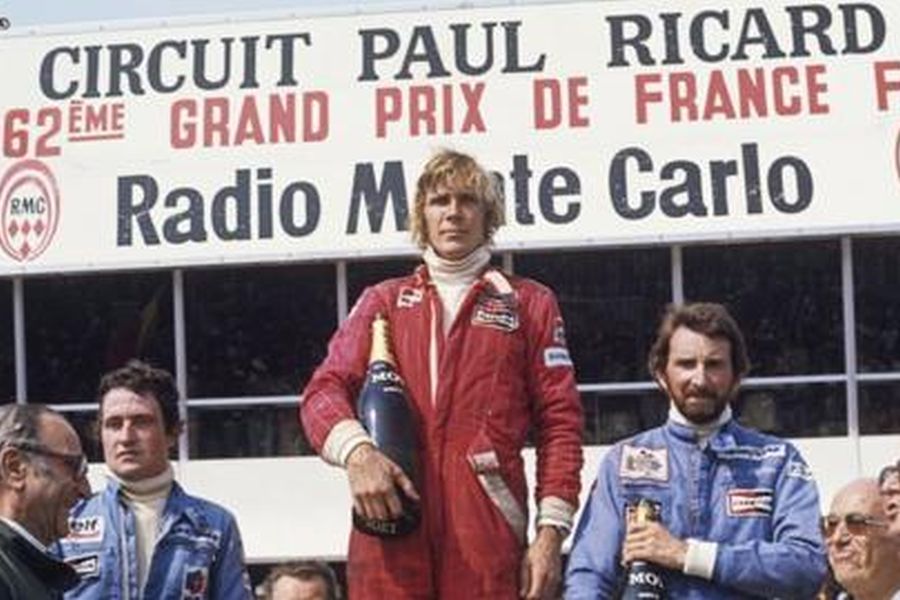
1976 French Grand Prix: Patrick Depailler, James Hunt, John Watson
Magny-Cours as permanent host from 1991 to 2008
Circuit de Nevers Magny-Cours became the venue of the French Grand Prix in 1991 and stayed on the Formula One calendar until 2008. Williams-Renault clinched three wins in a row from 1991 to 1993, two for Nigel Mansell and one for Alain Prost. With his sixth win, Prost was a record-holder until Michael Schumacher set a new record eleven years later.
The other winners of the French Grand Prix at Magny-Cours were Damon Hill (1996, Williams), Heinz-Harald Frentzen (1999, Jordan), David Coulthard (2000, Mercedes), Ralf Schumacher (2003, Williams), Fernando Alonso (2005, Renault), Kimi Raikkonen (2007, Ferrari) and Felipe Massa (2008, Ferrari).
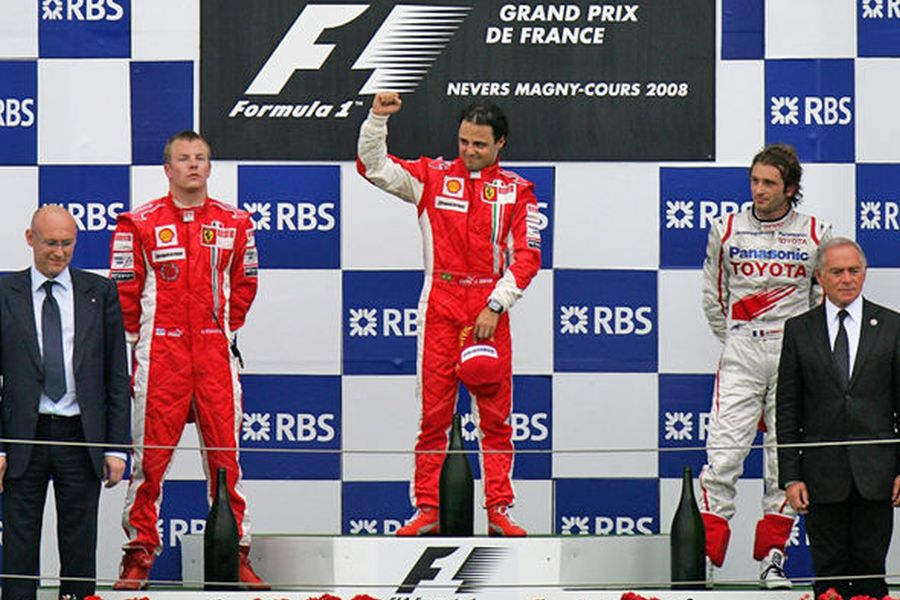
Felipe Massa was the winner of the 2008 French Grand Prix
Michael Schumacher is a record-holder with eight wins
An era of Michael Schumacher started in 1994, in his first championship-winning season with Benetton. The victory at the French Grand Prix was among his eight wins that year. In 1995, he was a champion again with Benetton and the winner at Magny-Cours.
After joining Scuderia Ferrari, Schumacher clinched five more championship titles and recorded six more wins at Magny-Cours (1997, 1998, 2001, 2002, 2004 and 2006). With eight wins, he is the record holder of the French Grand Prix, ahead of Alain Prost with six wins and Louis Chiron with five wins.

Michael Schumacher and Jean Todt at 2002 French Grand Prix
The new era has begun in 2018
In 2018, the new era started with the return of the French Grand Prix to the Formula 1 calendar. The race took place at the Circuit Paul Ricard, using the 5.842-km long layout. Lewis Hamilton started from pole and clinched a victory in a Mercedes.
Photos: Getty Images, Bibliotheque nationale de France, grandprixhistory.org, circuitpaulricard.com, primotipo.com,


